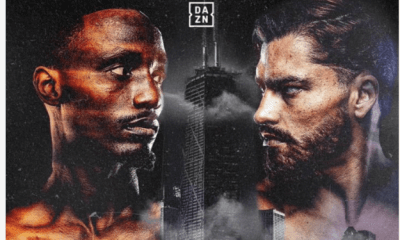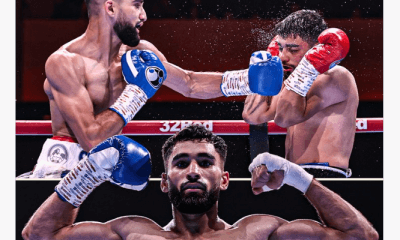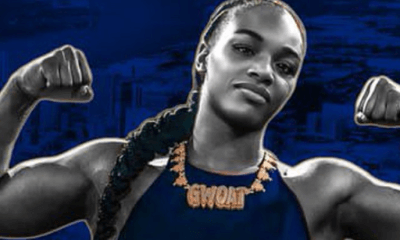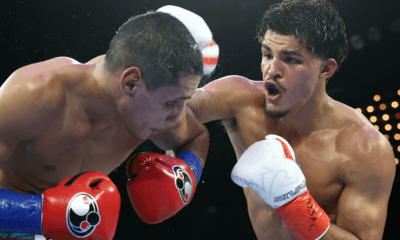Featured Articles
Fullmer vs. Paret: Prelude to Tragedy
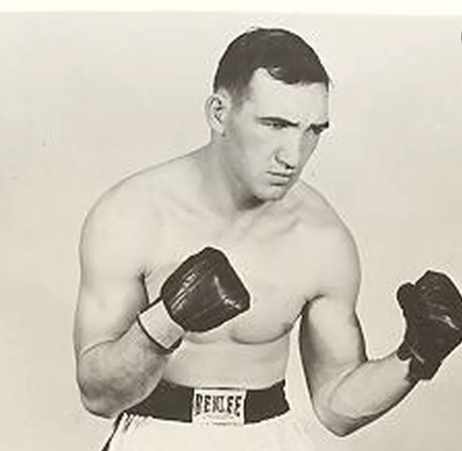
In the movie The Harder they Fall, boxer Buddy Brannen (played by Max Baer) renders a horrific beating on Gus Dundee (played by former heavyweight contender Pat Comiskey) who thereafter suffers from terrible headaches, symptomatic of brain damage, heading into his next fight with the highly touted Argentinean giant Toro Moreno (Mike Lane). Everyone knows that Gus is damaged goods except the naïve, feather-fisted Moreno who knocks him out, whereupon Gus lapses into a coma and dies.
Max Baer was suitably cast as the menacing Brannen. Humphrey Bogart and Rod Steiger are at their very best in what is arguably one of the best boxing movies ever made. It’s great theater.
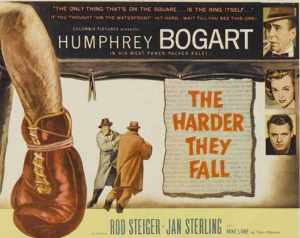
What was not theater was that heavyweight Ernie Schaaf compiled a record of 49-15-1 that included wins over the real Max Baer and Jim Braddock. In August 1932, he was decisioned by Baer in a rematch. However, he was actually saved by the bell when Baer knocked him out with seconds remaining in the fight.
Six months later, feather-fisted giant Primo Carnera knocked out Ernie in 13 rounds. Schaaf died four days later. Many believe the injuries suffered in his bout with Baer contributed to his death. Schaaf, of course, became the fictitious Gus Dundee. The fictional Moreno harked to Carnera.
Gene Fullmer
Later, in the 50s, former middleweight champion Gene “Cyclone” Fullmer (pictured) went on a tear after losing by spectacular left hook knockout to Sugar Ray Robinson on May 1, 1957 in the Chicago Stadium. The shot — often referenced as “The Perfect Hook” — caught the brawling and iron-chinned Fullmer flush on the chin.
“People tell me it was a great left hook, but I wouldn’t know. I never saw it.” – Gene Fullmer
Alternating between venues in Utah and large arenas elsewhere, Gene, a Utah Mormon, ran off eleven straight wins before drawing with Joey Giardello in Bozeman, Montana in April 1960. Among his victims were Ralph “Tiger” Jones, Spider Webb, Joe Miceli, and Carmen Basilio.
Fullmer stopped Basilio after the draw and then drew again (albeit controversially) with Sugar Ray Robinson (144-8-2) in December 1960 in Los Angeles. Three months later, he decisoned Sugar Ray in Las Vegas, thus going 2-1-1 over Ray during the course of his career.
Based on the level of his opposition and the frequency of his fights, Fullmer was the quintessential “best vs best” type fighter. Throw a dart and you were liable to hit the names of Paul Pender, Gil Turner, Del Flanagan, Rocky Castellani, Charlie Humez, Florentino Fernandez, or Eduardo Lausse. Tough and relentless, he just kept up the pressure from beginning to end; he kept coming and coming with endless stamina.
The Benny “Kid” Paret Fight (December 12, 1961)
Gene was 54-4-2 when he faced “The Kid” (35-10-3) at the Convention Center in Las Vegas. Paret had lost three of his last five bouts, all during a short period of time, and each of the fights had been against elite opposition.
Their contrast in styles did not bode well for the skilled Paret who had moved up in weight. The stronger and bigger Fullmer forced Benny into a brawl and then, after gaining control, butchered him in a sustained way that was difficult to watch and likely triggered shouts of “stop it” from ringside as the slaughter moved into the tenth round. This was a precursor to Duran vs. Moore as Fullmer was on a rampage and landed one thudding head and body shot after another leaving Paret bloodied and spent and ready to be taken out.
Here is how historian and author Mike Silver saw the action in a 2012 story written for Boxing.com: “In the tenth round the exhausted, bloodied challenger was the recipient of one of the most frightful and sustained beatings this writer has ever witnessed. Seven full power right hand punches were landed consecutively to Paret’s head before he went down. After getting up from the second knockdown he could barely stand. The referee, Harry Krause, inexcusably allowed the fight to continue for one more knockdown before finally counting him out.”
Amazingly, Benny was able to leave leave the ring without being stretchered out, but in retrospect that might have worked against him as he returned to action far too soon. It’s a cliché but it fits—Benny “Kid” Paret was now damaged goods.
Fullmer had also taken some heavy shots and his face was pulpy and beaten up. Importantly, however, he said that he hit Paret harder and more often than any other opponent.
The Cyclone from Utah did not fight for ten months and then went 0-2-1 against Dick Tiger ending an illustrious career (55-6-3) capped by his inclusion into the International Boxing Hall of Fame in 1991.
The Kid, however, fought Emile Griffith just over three months later in Madison Square Garden; he should have been retired or, at a minimum, not have been allowed to fight for a controlled period of time. As Mike Silver writes, “Benny ‘Kid’ Paret” was doomed before he ever stepped into the ring…..[he] was literally a dead man walking. And Emile Griffith, the other victim in this tragic scenario, was the final straw.”
The rest, of course, is well-documented history. The sensitive and extremely popular Griffith was inducted into the IBHOF in 1990.
Ironically, many observers declared that Griffith was a consummate fighter, except the one thing he did not do well was punch. Really?
“Boxers lasts only a short time, but managers go on forever.”–Joe Greb
Ted Sares can be reached at tedsares@roadrunner.com
Check out more boxing news on video at The Boxing Channel
To comment on this story in The Fight Forum CLICK HERE
-

 Featured Articles3 weeks ago
Featured Articles3 weeks agoResults and Recaps from New York Where Taylor Edged Serrano Once Again
-

 Featured Articles6 days ago
Featured Articles6 days agoThe Hauser Report: Zayas-Garcia, Pacquiao, Usyk, and the NYSAC
-

 Featured Articles3 weeks ago
Featured Articles3 weeks agoResults and Recaps from NYC where Hamzah Sheeraz was Spectacular
-

 Featured Articles4 weeks ago
Featured Articles4 weeks agoFrom a Sympathetic Figure to a Pariah: The Travails of Julio Cesar Chavez Jr
-

 Featured Articles2 weeks ago
Featured Articles2 weeks agoManny Pacquiao and Mario Barrios Fight to a Draw; Fundora stops Tim Tszyu
-

 Featured Articles3 weeks ago
Featured Articles3 weeks agoPhiladelphia Welterweight Gil Turner, a Phenom, Now Rests in an Unmarked Grave
-

 Featured Articles2 weeks ago
Featured Articles2 weeks agoArne’s Almanac: Pacquiao-Barrios Redux
-

 Featured Articles4 weeks ago
Featured Articles4 weeks agoCatterall vs Eubank Ends Prematurely; Catterall Wins a Technical Decision


